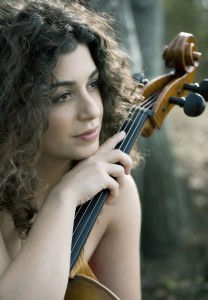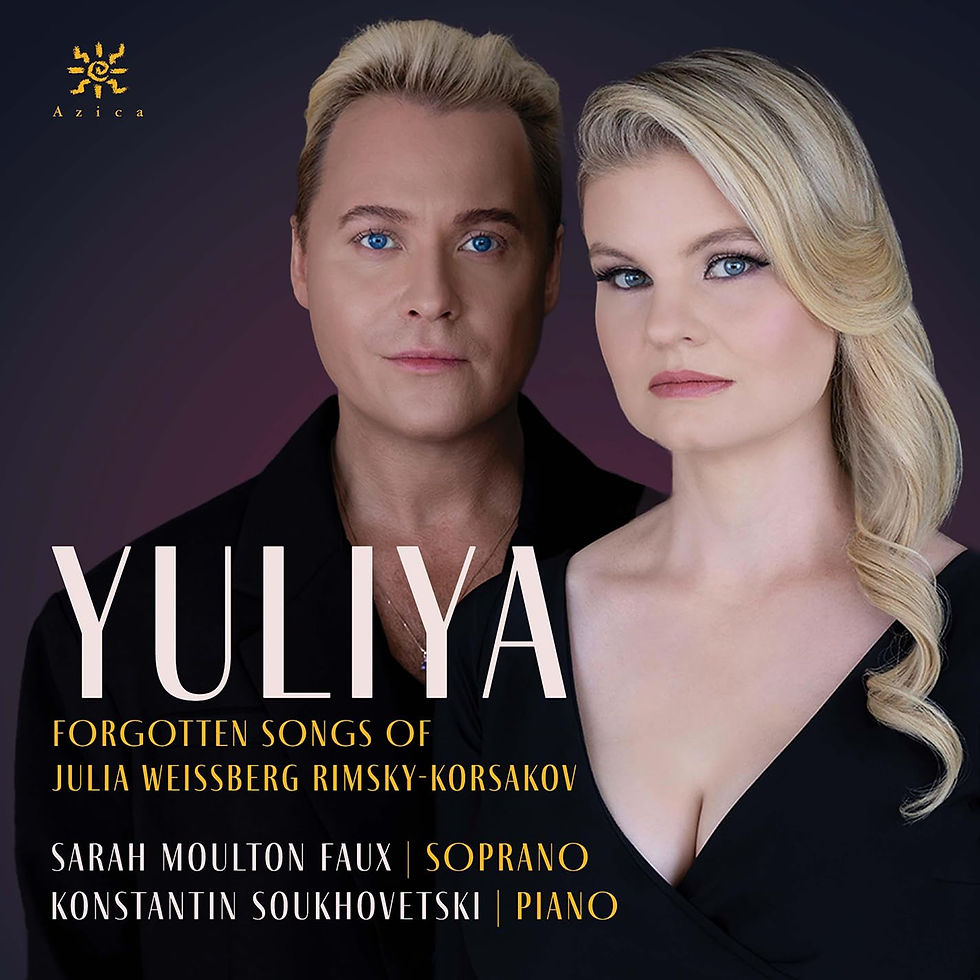The joyous spirit of sound – cellist Ani Aznavoorian
- Jun 3, 2014
- 5 min read
Updated: Jun 12, 2020
I know the price of Silence When on the threshold of sound, It congeals in the contour of emptiness Blends with the beating heart.
(Part of the poem “Insomnia” – by Lera Auerbach)
Painting by Lera Auerbach

Cellist Ani Aznavoorian and pianist/composer, all around artistically creative tour de force, Lera Auerbach were roommates during their mutual years at Julliard. Perhaps it is this personal familiarity that connects two exceptional musicians, or perhaps it is their immensely harmonious musical affinity that forges a special bond; either way, the fact remains that when both young women join in recital or collaborate as composer and soloist, sparks ignite, which comes as no surprise.
(Photo credit: Lisa Mazzucco)
“We always had a strong connection and liked each other’s company,” says Aznavoorian, who recently traveled from Santa Barbara for a recital in New York. She has studied with Aldo Parisot and was the youngest cellist to win Juilliard’s concerto competition during her first year there. Since then, Aznavoorian has performed internationally with many renowned orchestras and musicians. Yet, Aznavoorian and Auerbach’s live performance of Auerbach’s 24 Preludes for cello and piano, which she composed at age 26 in 1999 and set as a ballet choreographed by John Neumaier, at Hamburg, Germany’s Staatsoper 11 years ago, has been “their biggest thing together” to date, according to Aznavoorian.
That at least was true until Auerbach’s new concerto Dreammusik, written for Camerata Pacifica and Ani Aznavoorian, received its premiere on March 7th of this year at the Colburn School Zipper Auditorium in Los Angeles by Aznavoorian and members of the renowned West Coast chamber music ensemble.
It was a 2010 performance of 24 Preludes that inspired Sandra Svoboda, a longstanding fan of Aznavoorian’s dynamic performance style and the Camerata Pacifica’s novel programming, to commission a new composition by Auerbach, to be performed by the much-loved cellist, who has held Camerata Pacifica’s first cellist chair for five years. The commission was intended to recreate for the ensemble and Aznavoorian the invigorating spirit of 24 Preludes, which was described as having “bristled with muscular vigor and ferocity,” and marked as “a definitive performance of a remarkable addition to the chamber repertoire.”
The March 2013 release of Celloquy, a collaborative recording of Aznavoorian and Auerbach on the Cedille label featuring 24 Preludes along with Sonata, composed in 2002, and Postlude, a work from 2006, coupled with further live performances of 24 Preludes kept the work’s momentum, leaving its characteristic mood fresh in the minds of audiences. The piece itself is momentum; the cyclic composition of the 24 miniature works – one in each key signature, based on a tradition of Prelude writings from Bach to Shostakovich – spans the broad emotional range of Auerbach’s dramatic but intensely lyrical writing. The tonal center belonging to its traditional predecessors is virtually frayed apart by chromaticism and huddles of musical structures, keeping its dramatic energy alive.

The new concerto for the cellist and small chamber ensemble, long awaited by Aznavoorian and Camerata Pacifica, came as an unexpected surprise to Aznavoorian when it finally arrived: “The piece was quite different from what I thought it might be. Lera’s works I have previously played have been quite virtuosic and full of gesture, but Dreammusik is more about texture and color, and almost lulls the audience into- an appropriately- dreamlike state. Unlike the traditional concerto writing with separate movements, it is an approx. 35-minute work without pause, so the scope and structure of it are two very complex aspects. It is dark and brooding, and tremendously beautiful,” says Aznavoorian. When it came time for Aznavoorian to premiere Dreammusik with nine members of Camerata Pacifica, much to the cellist’s relief, Auerbach was present and extremely helpful during the rehearsal process. It was, after all, the first time the cellist had had the opportunity to hear the full piece as a whole; a complex moment, certainly, even for an intuitive and sensitive musician like Aznavoorian, whose most pervasive passion is chamber music. “I love everything about it, most of all the music, but also the whole process of rehearsing together and then being on stage together with friends. I sometimes laugh hysterically and say to myself – I can’t believe this is my job!” Indeed, watching Aznavoorian’s ways with her cello, one realizes instantly the great joy she feels connecting with her instrument. Her cello has been made for her by a craftsman close to her heart – her father Peter Aznavoorian. Of Armenian descent and based in Chicago, he followed a calling late in life, and became a violin maker: “He knows more about the instruments than anyone I know and he is very specific in his ways. My cello has the letter ‘A’ carved in its scroll, my father says it stands for Aznavoorian, but for me it stands for Ani – it’s mine,” she laughs, shaking her curly hair. Observing her in performance, it’s easy to sense that she has made that instrument fully her own, willing it to express finely nuanced shades of color, a subtle, warm tone, and a brilliant, natural technique. Aznavoorian’s career has taken many different paths, and includes teaching, which she enjoys wholeheartedly. But, like so many young mothers, she struggles a bit with finding the right balance between her family life and career. “It is difficult to stay visible,” she says. With one small son, Alexander, aged two and a half, and with one more child on the way, the artist has had to cut down on her traveling performances. (Photo credit: Lisa Mazzucco)

While she came to New York twice a month before having kids, she now only comes four times a year, often to perform with the Jupiter Symphony Chamber Players, whose one-of-a-kind program she appreciates. Brought up with music from age three, it has remained a key ingredient in her life, turning her into the imaginative and reliable musical partner that her many artistic collaborators, among them Auerbach, recognize her to be. Auerbach, born in the Urals, had defected from the Soviet Union to pursue the wider shores of her vigorous and seemingly endless creative energy, successively adding different artistic mediums to her prodigious pianism. For about five years now, this creativity has also translated into a growing oeuvre of paintings and sculptures. In connection with her new concerto for Aznavoorian, Auerbach painted a Chagall-reminiscent dreamscape, which she offered for auction, donating half of the proceeds to further Camerata Pacifica’s programs. Enamored, with the vivacious work – a perfect relic of her memorable experience with the concerto commissioned for her – Aznavoorian and her husband decided to purchase it. The work announces the concerto on the Camerata Pacifica poster, dominated by a deep oceanic blue terrain, complete with floating cello and other fish; the original oil and sepia-on-canvas painting, which measures about 40 x 30 inches wide, is currently being framed for Aznavoorian. Concerning the meaning of the concerto itself, though, Auerbach remains adamantly silent. In an interview with Daniel Kepl leading up to the concerto’s premiere, she said: “I want the audience to know it for themselves. I think words from the composer can become quite dangerous when it comes to music. It’s a beautiful invitation for the audience to explore their own imagination.” That does seem appropriate when dealing with dreams – and music: a very personal and transient dimension, existing in a world of its own.



Comments